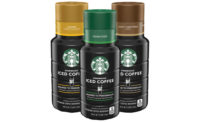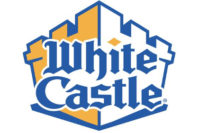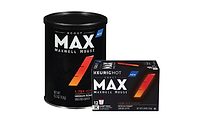High commodity pricing can be a major issue for the beverage industry. However, when premium-priced products are in demand, this challenge becomes less troublesome. Such is the case for the coffee market, in which growing trends such as higher-priced single-serve packaging are helping to offset rising costs of coffee beans, according to market research analysts.
Last year, the coffee market experienced a decline in green coffee bean prices, thereby enabling major manufacturers to drop the prices of their products, notes Dana LaMendola, beverages analyst for Euromonitor International, Chicago. As a result, volume sales of ground coffee at retail increased, but dollar sales slightly decreased, she says.
This year, however, product prices are rising in anticipation of environmental challenges, LaMendola says. In fact, Santa Monica, Calif.-based IBISWorld expects category revenue to decline 2.4 percent this year because of a 32.7 percent increase in the price of coffee beans. Despite this challenge, category trends are helping many coffee makers to offset these commodity costs. For instance, consumer demand for specialized coffees, such as single-serve pods, has justified an increase in product pricing, IBISWorld suggests.
Single-serve pods stealing share
Although single-cup coffee pods are bringing value to the overall coffee category, they also are cannibalizing ground coffee sales, Euromonitor’s LaMendola notes.
“The coffee pod growth is affecting ground coffee sales much more than any other segment, because these are appealing to the same consumer, so that has the ability to take share away most often from ground coffee vs. beans or instant,” she explains.
According to IBISWorld, ground and whole-bean coffee accounts for 30 percent of the overall coffee market — including both on- and off-premise sales — followed by ready-to-drink (RTD) coffee at 15 percent, single-cup coffee at 13 percent, and instant coffee at 5 percent, with fresh-brewed coffee accounting for the remaining 37 percent.
As a result of single-cup coffee’s growing success, sales of ground and whole-bean coffee have declined fairly rapidly in the past year, notes William A. Roberts Jr., senior research analyst in Chicago-based Mintel's Food and Drink division. Data from Chicago-based Information Resources Inc. (IRI) shows that the ground coffee segment was down 5.6 percent in dollar sales in U.S. multi-outlets for the 52 weeks ending July 13, compared with the prior-year period. Likewise, ground decaffeinated coffee decreased 8 percent in dollar sales, and whole-bean coffee declined 11.3 percent during the timeframe, compared with the prior-year period, according to IRI data. On the other hand, IRI reports that single-cup coffees increased 28.4 percent during the timeframe, compared with the prior-year period. Mintel expects this trend to continue, with sales of ground and whole-bean coffee declining nearly $400 million and single-serve cups gaining nearly $1 billion this year, Roberts says.
The proliferation of flavors and brands in the single-cup coffee segment adds to the appeal of single-cup coffees; however, convenience is the main motivation for buying this coffee format, Roberts says. The convenience trend also is extending to shelf-stable and refrigerated RTD coffees, he notes.
Some like it cold
“RTD coffees — refrigerated and shelf-stable — are actually reaping the benefits of time-pressed consumers for whom even the few minutes necessary to brew a single cup is a luxury,” Roberts says. “As with single-cup, the RTD market is likewise expected to grow over the next five years, albeit at a slower pace, but to enter 2020 as a $2.6 billion segment.”
According to IRI data, shelf-stable cappuccinos and iced coffees increased 10.6 percent in dollar sales in the 52 weeks ending July 13, compared with the prior-year period. Additionally, dollar sales of refrigerated RTD coffees grew 27.8 percent during the timeframe, compared with the prior-year period, IRI data shows.
This year marks the third consecutive year that RTD coffees have shown strong growth, Euromonitor’s LaMendola notes. In addition to convenience, consumer interest in and acceptance of iced coffee is adding to the segment’s appeal.
“There’s more of a barrier to make your own iced coffee than to make your own hot coffee, so I think that that’s where RTD coffee definitely fills that demand,” she says.
Leading the cappuccino/iced coffee segment is Starbucks' collection of single-serve coffee drinks. The portfolio of RTD coffees, which are manufactured and distributed by The North American Coffee Partnership, a joint venture between Starbucks Coffee Co. and Purchase, N.Y.-based PepsiCo Inc., account for a 98 percent share of the market, according to IRI data. However, New York-based Vita Coco’s Vita Coco Cafe brand of espresso and coconut water drinks also showed strong growth, with a 146 percent increase in dollar sales in the 52 weeks ending July 13, compared with the prior-year period, IRI reports.
A new, important trend that has emerged within the category is multi-serve iced coffees, Euromonitor’s LaMendola says. The multi-serve packages offer added value and began gaining popularity at the end of 2012, she says. In the 52 weeks ending July 13, multiple multi-serve iced coffees experienced quadruple-digit growth in dollar sales, according to IRI data. For instance, Starbucks Coffee Co.’s Starbucks Discoveries brand increased 1,372.4 percent; Blue Diamond Growers’ Blue Diamond Almond Breeze brand grew 1,206 percent; and Califia Farms’ same-named brand gained 4,226.4 percent during the timeframe, compared with the prior-year period.
Further demonstrating the trend toward multi-serve iced coffees, Starbucks recently introduced a multi-serve line of “Brewed to Personalize” iced coffees. Available in Lightly Sweetened, Unsweetened and Caramel varieties, Starbucks Iced Coffee Brewed to Personalize beverages enable consumers to customize their drinks with the creamers and/or sweeteners of their choice. A 48-ounce bottle makes approximately six 8-ounce servings of iced coffee, the company says.
Cold-brew coffee is another emerging trend impacting the RTD coffee segment, Euromonitor’s LaMendola notes. This summer, Austin, Texas-based High Brew Coffee debuted its line of RTD cold-brewed coffees in Double Espresso, Mexican Vanilla, Salted Caramel and Dark Chocolate Mocha flavors. The coffees are made from 100 percent Fair Trade Arabica coffee beans that are triple filtered and cold-brewed to preserve flavor, antioxidants and caffeine, the company says.
“Cold-brewed coffee is very much perceived as a superior way if you’re going to have iced coffee, because it’s not as watered down,” Euromonitor’s LaMendola says. Furthermore, by offering cold-brewed coffee in an RTD format, it can save consumers hours of time that they would have spent making it themselves.
“Cold brew is so time-intensive to make yourself that these prepackaged RTD coffees that are already coming in cold-brew are very appealing for consumers,” she explains. “They are perceived to be the best way to have iced coffee, because it’s not going to be watered down and it’s going to have that less-acidic, closer-to-coffee flavor, but you don’t have to go through the time of making it yourself.”
Instant appeal
Although consumer demand for convenience has positively impacted the single-cup and RTD coffee segments, it hasn’t benefited the instant coffee segment. According to Euromonitor’s LaMendola, the segment declined in both dollar and volume sales last year. Furthermore, IRI data show that regular instant coffee declined 3.9 percent in dollar sales in the 52 weeks ending July 13, and instant decaffeinated coffee decreased 9.7 percent in dollar sales, compared with the prior-year period.
Although Folgers Fresh Breaks, a brand of The J.M. Smucker Co., and Starbucks Coffee Co.’s Starbucks Via instant coffees are positioned as premium, higher-quality instant coffees, Americans generally still perceive instant coffee to be an inferior option, according to Euromonitor's LaMendola.
“Instant coffee in the U.S. has not been as dynamic of a category,” she says. In addition to its “inferior” reputation, the segment competes with single-serve coffee pods that also carry a convenience benefit, she notes.
To fight attrition, instant coffee makers are focusing on quality products underscored by variety, functionality and value positioning, according to an April 2014 report titled “Coffee and Ready-to-Drink Coffee in the U.S.” by Packaged Facts, a Rockville, Md.-based division of Market Research Group LLC.
For instance, Starbucks Coffee Co. extended its Starbucks Via line to include lattes earlier this year. The lineup includes Vanilla Latte and Caffé Mocha instant coffees.
Liquid concentrates also could help to bring consumers to the instant coffee segment, the report notes.
Packaged Facts also suggests that co-branding is driving innovation in the overall coffee category. Co-branding creates brand recognition and cross-merchandising opportunities, Packaged Facts’ report states.
Additionally, seasonal flavors and specialty sources offer variety and speak to demand for premiumization, respectively, the report states.
IBISWorld notes that in the five years leading up to 2019, revenue for the coffee market is forecast to grow at an annualized rate of 2.7 percent, as coffee bean prices exhibit less volatility. Excluding on-premise sales, Packaged Facts expects coffee sales to rise just more than 5 percent in 2015 and 5 percent in 2016, slightly lagging foodservice growth of 5.5 percent both years, it reports.








